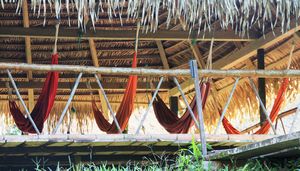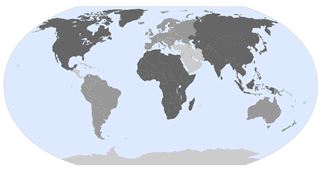Advertisement
Published: April 13th 2011

 Invitation to relax
Invitation to relax
This was meant to go in the last post - aspirational for our next homeCities do tend to become much of a muchness after a while. I have had a view that a key element in the difference between countries is really a product of the natural environment and its interplay with the people, or vice versa of course, expressed largely through the built environment. So, cities should always be interesting? But they aren't. Or perhaps it is just that the built environment can become boring just a little more quickly than the natural environment? Or perhaps I am just being ignorant? Anyway, it is probably pointless to continue this discussion. My editor is likely to expunge such comments as irrelevant to a travel blog - or because she can't find the photos to illustrate that I am wrong.
And another thing that is probably not appropriate. It seems to me that places have a 'feel'. You could call it a 'vibe' I suppose, but that sounds a little wanky and is not really what I want to say. The ambience or even atmosphere could be a better description but 'feel' is the word for me – notwithstanding the other possible usages of the word among the common herd. Cities and parts of cities
can feel safe, happy, dangerous, dodgy, welcoming or hostile. So too can countries. Tegucigalpa felt unsafe and not welcoming at all. The explosions and razor wire didn't really help. Quito, on the other hand, felt pretty safe and, although not as welcoming as, say, Cairo – where every second person on the street greeted us with 'welcome to Cairo' and a big smile – it is not an unwelcoming sort of a place. The people in the hostel we chose, the Chicago House Hostel, were very welcoming, friendly and helpful, but people on the street in Ecuador tend not to pay too much attention to wandering tourists. There is, however, a good 'feel' to Ecuador. Better than average in my opinion, which is based on … nothing tangible at all really.
There was a demonstration in the main square of the old town of Quito, when we wandered through in pursuit of the instructions on the walking tour provided on a map by the tourism information office. As a tourist you are always told to avoid demonstrations. Some things are hard to give up though and this one seemed to have pretty strong official sanction. There were a lot

 Take Away Pork
Take Away Pork
A stall in the Otavalo Marketof police about but they seemed to be pretty much in favour of cutting out violence against women so we hung around and took photos. You will, however, see no photos at all of the very fit and large men in tight camos carrying serious guns and with a very large and businesslike knife strapped onto their chest – so that it could be quickly drawn and driven into someone. Not too sure of their role in proceedings but I suppose they could do pretty much whatever they wanted.
There is really nothing all that much more special about Quito than about most South American cities we have seen so far. The old town was interesting in parts and felt relaxed. We spent some time wandering around, identifying the landmarks marked on the map and headed up to the New Town area to chase up some shops and tour operators. The city sits in a high and spectacular valley. There are some reasonable old buildings and other interesting more modern ones. It has the normal bars and tourist areas, some of which can be expensive.
Quito feels pretty safe but there are plenty of stories about crime and
you do need to take care. Here we had our first experience of the pickpocketing technique that involves the dumping of crap – it could be mayonaisse, mustard, curry juice or something similar – on to you somewhere. A helpful person then helps you clean up while either he/she or their mates remove any valuables that might be lurking about your person. We were walking up the street in the old town on a Saturday morning. Plenty of people around but it was not too busy. I felt nothing and heard nothing – going deaf has its up sides – but Pat was told by a helpful young man that we had crap all over our backs. The instant reaction was to stop and clean it up but we ignored that and kept walking with our stuff securely tucked up until we were well away from anyone else. The stuff wasn't easy to remove but it cleaned up with a bit of effort.
Otavalo is a couple of hours north of Quito by bus and hosts what is said to be the largest Indigenous market in South America every Saturday. The plan was to get moving early by taking

 Boys in a Boat
Boys in a Boat
In one of the parks in Quitoa taxi to the northern bus terminal and pick up a bus there for Otavalo. We struck an interesting taxi driver who, on hearing that we wanted to go to Carcelen, the northern bus terminal, said, no you don't, I will take you to the bus terminal that is closest. That was definitely not our plan so we insisted and he threw us out, quite nicely though. The next taxi was more normal. About 30 minutes to the bus terminal. Almost an hour waiting on the bus till it filled and then less than 2 hours to the market.
The Otavalo market was certainly big but, just quietly, not as big, noisy, busy or different as any number of markets in India, SE Asia or Africa. Bought a couple of hats, hammocks and bits and pieces and came home. The market was not as busy on the day we were there as it is reputed to get, but that could have been a lot to do with the rain that hung about all day.
Travel in South America necessarily involves long days on the road or taking to the air. It is a big continent and comes as

 Cactus Garden
Cactus Garden
Pumapungo Archaeological Gardens, Cuenca
a just a little bit of a surprise after spending many months in Europe and Central America. Ecuador is not a large country by South American standards but it still took us from 9.00 am until 6.00 pm to travel from Quito to Cuenca. A lot of people use the night bus option and thus save both time and money by cutting out accommodation costs for the night. We opted this time for a day bus. It was a good move.
The scenery was spectacular – and we had plenty of time to look at it as the Pullman Sucre bus stopped all too frequently to pick up and drop off passengers, until the fog rolled in at the higher altitudes. This is a beautiful part of the world. Picture perfect villages and farms nestled into the hills. Cultivation as far up a hill/mountain as you could imagine anyone could get, let alone have an animal walk pulling a plough. The land looks very fertile, although it is hard to tell from a bus. Certainly, it is intensively farmed with individual holdings not very large. Judging only from the type of equipment being used and the vehicles being driven,

 Chatting in Quito
Chatting in Quito
Quite early in the morningI would punt that farmers here have a tough but perhaps not desperate time of it.
The people gradually changed along the way. As we moved into the hills there were many more people dressed traditionally. This is clearly not an affectation. Many would wear their trilby hats to sit on their front step or work in the garden. It is very much their everyday dress. The trilbys gave way to a white/gray hat with a small brim, normally made of felt. Little balls on the front signify a woman and hanging on the back a man.
We have read, and this has been confirmed by guides and the like here, that the various styles of dress adopted by Indigenous people was dictated in decrees of various Spanish viceroys. While some, women especially, make the styles look quite elegant, you can only wonder what those viceroys were thinking at the time. But you cannot fail to be impressed by the loyalty to tradition, albeit an imposed one, that the people are able to maintain, generation after generation.
If you come to Ecuador, then Cuenca needs to be on your intinerary. Given my earlier comments on cities I

 Having a chat
Having a chat
in a park in central Quitowon't wax lyrical about the place so let's just say it is a cut above the mob. The old town area was very nice to walk around, the bus station and airport are not miles out of town and people here seem to be keen on having tourists around.
It helped that we had booked a nice hostel. As with a lot of establishments in Spanish towns, not so great from the outside but, through the door of the Naranja Hostel, you enter a very old house that has been restored with artistic flair. No two rooms are alike. Facilities are good and thought has gone into the place. Another Hostal Trails place and it maintains the standard.
.
The Pumapungo Museum complex – also called the Banco Republica Museo on some maps – was, for us, the pick of the specific attractions of Cuenca. A very well set up museum with parts dealing with religious art, contemporary art, ethnography and archaeology. The site is an old citadel. Down the hill and into the park at the back of the museum is an ethno-botanical garden where medicinal and food plants and old farming practices are demonstrated, as well as

 On the hostel terrace, Quito
On the hostel terrace, Quito
Nice views, good kitchen at the Chicago Hostela small, but pretty good aviary. Very well done and a place that can take some hours to see.
From Cuenca it is into Peru and that will be the next post. Some will appreciate that we have slipped in our posting a little lately. We are hoping to get ourselves up to date fairly soon but we have been moving along quite smartly lately and it may take a little while to do that. For the moment, we have Ecuador as our South American 'pick' but there are, of course, just a few countries to go and it remains to be seen whether we find another country that is as welcoming, easy, beautiful, cheap and with as nice a 'feel' as Ecuador.
Advertisement
Tot: 0.062s; Tpl: 0.017s; cc: 10; qc: 26; dbt: 0.0318s; 1; m:domysql w:travelblog (10.17.0.13); sld: 1;
; mem: 1.1mb


























Alex
non-member comment
Hats and Flowers
David Hope you picked up a knitted hat to match my Ecuardorian effort... Do tell Pat her photo was of an Osteopermum. Bad news for (Northern) Oz is it requires water, well drained soil, and cloudy weather to get the 'whirlygig' effect... ideal for Blighty; I assume we stole them from South America. In my old garden I grew plants with white petals and purple reverses - an extraordinary sight. Looking forward to Peru tales - do throw in some stories from the locals you meet if you can, those are my favourite. Happy Easter; after forty days without meat, I cant wait. Alex